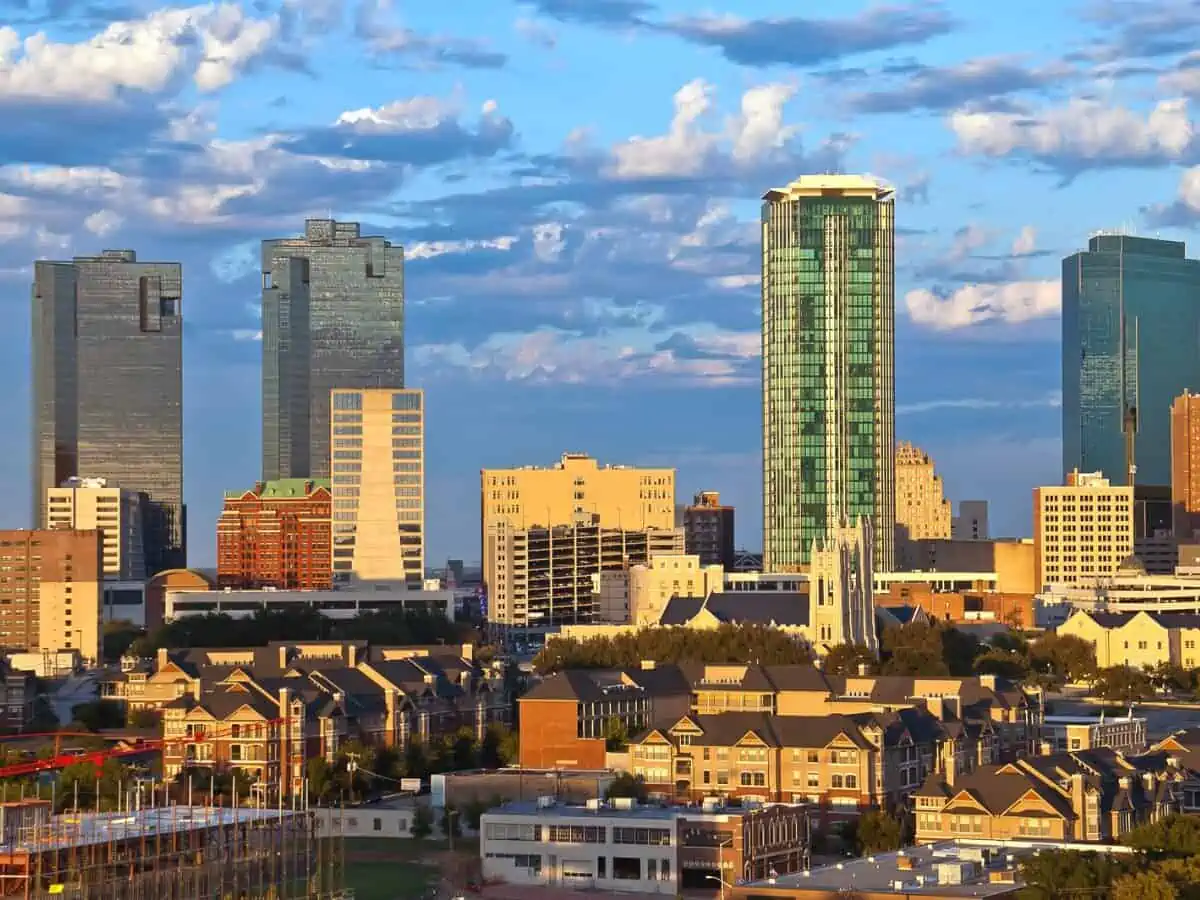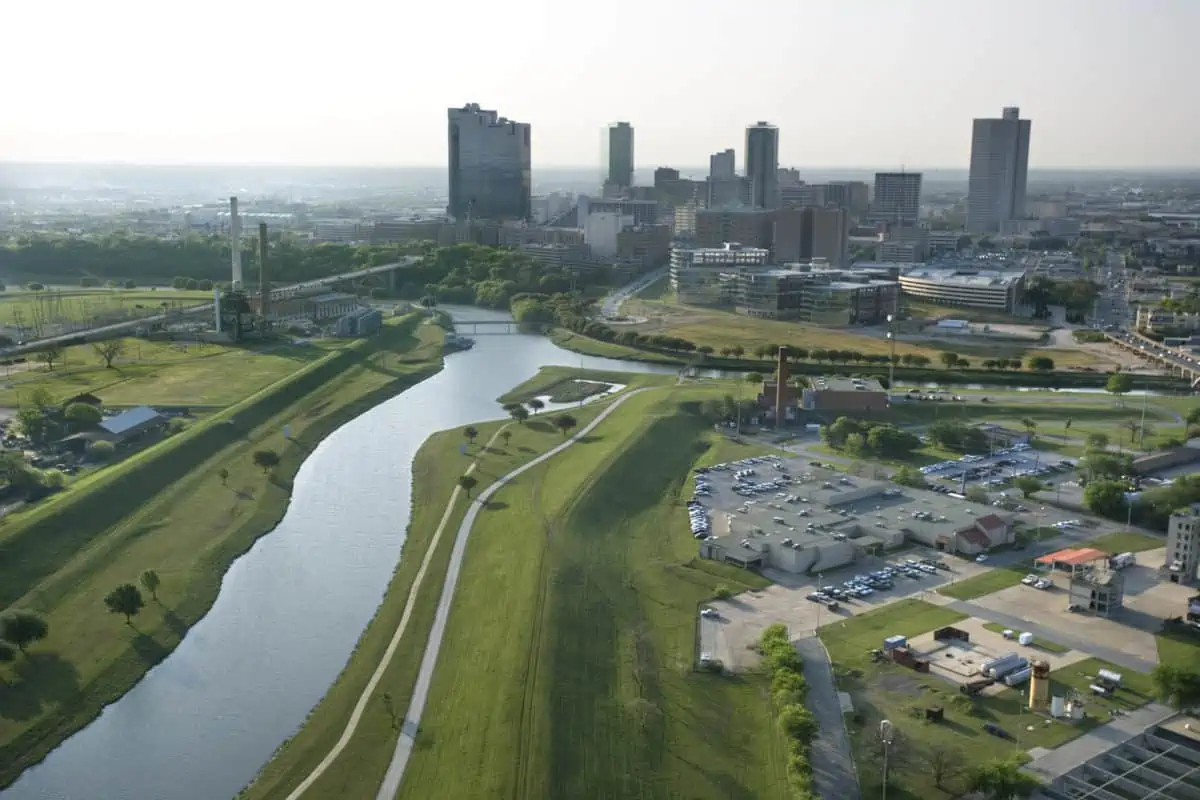Share the post "Fort Worth Traffic: A Comprehensive Breakdown"
Fort Worth is the 13th largest city in the USA, and it has a massive population. Unfortunately, this will affect how many cars are on the road. So, before you visit the city, it may be a good idea to ask, how bad is Fort Worth traffic?
Unfortunately, traffic in Fort Worth can be incredibly frustrating. Because of the huge population and the location, there’s usually congestion in the city. This is especially true during rush hours.

Is Fort Worth Traffic Bad?
Almost anyone that passes through the city will have a negative opinion of the traffic there. This is likely because Fort Worth is one of the fastest-growing areas in the USA.
Fort Worth holds a high position on the Global Traffic Scorecard ranking. Unfortunately, that means the roads are no strangers to constant traffic jams.
In 2021, the average driver experienced road congestion about 17% of the time. To help clarify this, here’s an example.
Imagine your commute is about an hour (60 minutes) long. We then multiply this by a factor of 1.17, which means it would take you an extra 10 minutes to arrive at your destination.
What Causes Fort Worth Traffic?
There are a few factors that determine how bad the traffic will get. Let’s take a look at some of these elements and why they cause congestion.
1. Geography
One of the first factors you should consider when calculating traffic is geography. Fort Worth is one of the largest cities in Austin. However, it’s only one part of the massive Tri-City metroplex that consists of:
- Dallas
- Fort Worth
- Arlington
Together, these three form one of the country’s greatest economic and cultural hubs. As you can imagine, that means Fort Worth attracts many visitors throughout the year. Anyone passing through the area will stop by the city for at least a few hours.
2. Population
In 2022, Fort Worth recorded a population of about 958,692. These people spread out over an area of 355 square miles.
While this sounds like a large area, you have to take into account all the elements of the city. That includes governmental institutions, buildings, and parks.
This doesn’t leave much room for roads. So, everyone will need to make do with the pathways that already exist in the city.
3. Road Habits
On average, a citizen will need to use public roads at least twice a day. Once on their way to work, or school, and the other on their commute back.
However, throughout the day, some people may need to run errands. For that reason, Fort Worth roads are rarely empty. There’s always a vehicle driving around for some reason.
In addition, most of the citizens don’t particularly enjoy carpools. That means each person will take up an entire car space. Add to that the narrow nature of the roads, and you have a recipe for traffic congestion.
4. Tourism
Other than the citizens that live in Fort Worth, the city gets many tourists during the summer. People visit from all over the country to experience some of the exciting activities. For example, they can take a stroll down one of the bright, busy streets.
Tourists can also enjoy many cultural institutions, restaurants, cafes, and clubs. On top of that, Fort Worth holds its fair share of sporting events. Sadly, that means that people will be flocking to the city, including during the winter and fall.
Even though tourism is excellent for the economic state of Fort Worth, it’s not good for traffic. It adds to the already overcrowded roads and worsens any traffic congestion.
5. Chokepoints
As part of any city landscape, there are specific chokepoints. These are areas with minimal space and heavy traffic flow.
In Fort Worth, there are four major chokepoints:
- I-35
- I-20
- I30
- I-820
These roads go by crowded areas in the city. So, more often than not, traffic will halt there and take hours to return to normal.
6. Traffic Signals
If you drive through Fort Worth, you’ll notice that there are hundreds of traffic signs everywhere you go. This is to ensure that people don’t drive recklessly and cause accidents.
That will improve road safety, and increase traffic jams in the process. Every time a driver halts at a stop sign or waits for the light to turn green, all the other cars have to slow down.

Are Fort Worth Roads Safe?
While traffic in Fort Worth isn’t ideal, the roads are safe. The city has thousands of streetlights to ensure that seeing after sunset isn’t an issue.
In addition, the heavy traffic congestion means that cars can’t travel at great speeds. This will slightly decrease the chances of major accidents.
Although car crashes are rare, you should always follow road rules and wear your seatbelt. That’s why Fort Worth requires all its drivers to take a safety course.
How to Avoid Fort Worth Traffic Jams?
Even though we can’t change traffic patterns, we can learn to navigate through them. The key is to figure out the flow of traffic and go around it. So, let’s take a look at what you can do to avoid getting stuck in traffic.
Avoid Rush Hour
Fort Worth is arguably at its busiest when citizens are rushing to work. This happens around 6:30 to 8:30 a.m. Similarly, starting at 4:30 to 7:30 p.m., everyone is making their way home after a long day. So, to get around traffic congestion, you have to avoid these periods as much as possible.
Use Side Roads
If you can’t avoid rush hour, then the next best thing is taking side roads. While these paths will still have cars driving through them, they’re less crowded.
Sadly, this will increase the overall distance you have to travel. However, you should be able to arrive at your destination earlier.
To help you out with this, you can use a traffic app. For example, Google maps can show you what roads to take to avoid congestion. On top of that, it can tell you if there are any roadblocks or accidents along the way.
Fort Worth Traffic FAQs
Is It Difficult to Drive in Fort Worth?
The city has many road signs to help vehicles travel smoothly. So, while traffic may be bad, the roads should be perfectly safe and easy to drive on.
At What Time Is the Traffic Lightest in Fort Worth?
Typically, before 6 a.m. and after 7 p.m. are the best times to drive in Fort Worth. The traffic should be light enough that you don’t have to stop your car regularly.
References:
- Global Traffic Scorecard: inrix.com
- Driver safety course: fortworthtexas.gov
- Fort Worth traffic: Youtube.com
Share the post "Fort Worth Traffic: A Comprehensive Breakdown"
Christian Linden is a seasoned writer and contributor at Texas View, specializing in topics that resonate with the Texan community. With over a decade of experience in journalism, Christian brings a wealth of knowledge in local politics, culture, and lifestyle. He holds a Bachelor's degree in Communications from the University of Texas. When he's not writing, Christian enjoys spending weekends traveling across Texas with his family, exploring everything from bustling cities to serene landscapes.











